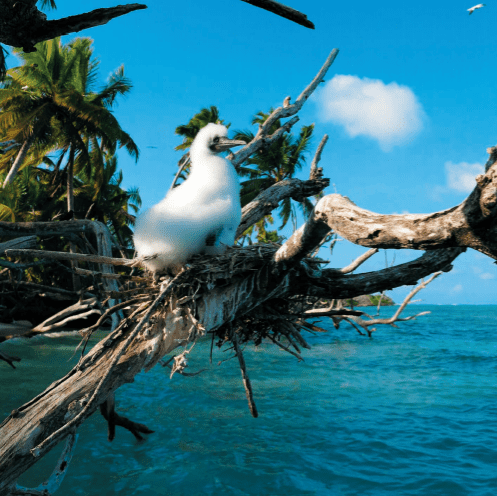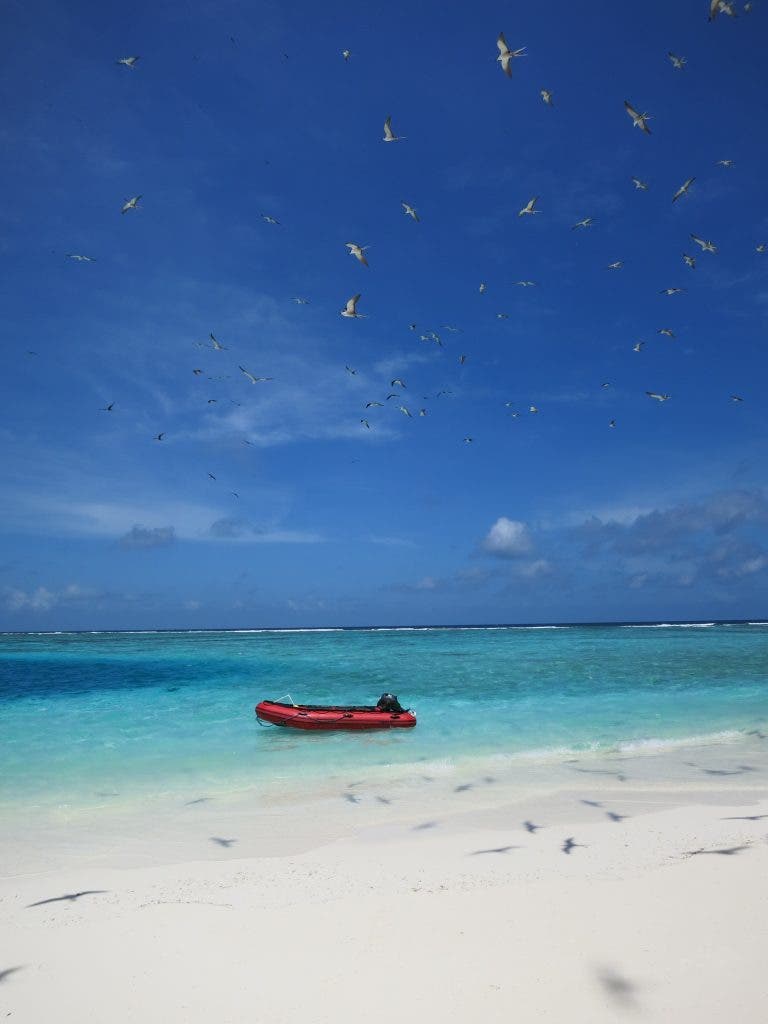As if rats weren’t causing enough environmental damage, researchers have found yet another source of concern: rats are indirectly harming coral reefs.

Chalk and Cheese
Few invasive species have even come close to rats in terms of sheer environmental damage. They’re adaptable, resilient, and can spread like wildfire. They also have a very close relationship with humans, being virtually omnipresent in human settlements; and as humans spread all around the world, so too did rats.
When humans started sailing between continents, rats came along for the trip and quickly spread from place to place, often wreaking havoc in their wake.
Small islands are particularly vulnerable. Quite often, these places have few predators or none, which makes them very attractive to species like birds. Seabirds are amazingly well adapted to deal with a range of environmental constraints, but rats are not one of them. So usually, when rats manage to sneak on a ship and reach such an island, they devastate the place.
The difference is striking. If you visit two nearby islands, a “clean” island versus one infested with rats, they couldn’t be more different.
“You step into one of these islands [without rats], it’s noisy, it smells, it’s full of life. You step on another island a kilometer away, similar size, similar elevation, and you can only hear the wave on the shoreline. The skies are empty, it smells great, and the island is completely different,” says Nicholas Graham, a Chair in Marine Ecology at Lancaster University and lead author of the study.
Speaking at the European Science Open Forum, he emphasized the scale of the rats’ impact.
“The difference is chalk and cheese, really.”
Rats, birds, and corals

Writing in Nature, Graham and his colleagues found that bird droppings help to fertilize islands and nearby coral reefs, an idea which has been recently addressed in other studies. Usually, nutrients are considered a hazard to marine wildlife — but that’s mostly about agricultural nutrients. Nutrients like nitrogen from bird droppings were found to have a net positive impact on the coral reefs.
The researchers carried out a rare natural experiment in the Chagos Archipelago, aided by the fact that some islands are rat-infested and others are rat-free.
“This study is about two different kinds of islands: those with rats and those with no rats,” Graham continues.
The northern atolls of the Chagos Archipelago, located in the central Indian Ocean, have been uninhabited by people for over 40 years, ever since the indigenous population was evicted to allow the United States to build a military base on one of the islands.
The archipelago is protected from fishing, and hostsal some of the world’s most pristine marine environments. However, rats were introduced to some of the islands in the 18th and 19th centuries, whereas others remained rat-free.
Researchers found that seabird densities were 760 times higher without rats, which triggered a cascading effect. With bird numbers going down, their fertilization impact also disappeared and as a result, coral reefs started to suffer.
It wasn’t just birds either. The whole ecosystem recoiled. Invasive rats on small oceanic islands were found to cause:
- massive reduction in seabird roosting and breeding colonies;
- massive reduction in nutrient delivery to terrestrial environments;
- external nutrients were reduced onto adjacent coral reefs;
- drop in productivity of the system;
- reduced overall fish biomass and ecosystem functioning.
By measuring the ratios of nitrogen isotopes in soils and shrubs, researchers could distinguish between “native”, locally sourced nitrogen, and bird-transported nitrogen. The researchers managed to trace how this nitrogen leaks in and around the island, so there’s little ambiguity to which nutrient comes from where.
They found that rat-free islands had substantially more dropping-derived nitrogen — an expected consequence, all things considered. Post-rats, inspected islands had 250 times less nitrogen, less fish growth, and less biomass than their rat-free counterparts.
“The take-home message is that rats on islands decrease coral reefs’ life and heath. That’s never been shown before,” Graham explains.
De-ratting
However, there’s a silver lining to all of this: de-ratting the islands could bring immediate and significant benefits for already struggling reefs. Graham says there’s a huge incentive to de-rat oceanic coral reef islands, and de-ratting should be a top priority for island management.
In an accompanying News & Views article, Nancy Knowlton, from the National Museum of Natural History at Smithsonian, makes a very compelling case on why this matters — and why it matters now, not later.
“This work has immediate practical implications, particularly because reefs are under grave threat around the world. Many of the early losses of coral reefs were due to overfishing, and a scarcity of herbivorous fishes continues to make reefs less resilient,” Knowlton writes.
“Adding rats to the list of dangers to reefs might seem discouraging. Yet the discovery
of the negative impacts of rats on reefs does point directly to a specific strategy that could slow the pace of reef degradation. Rats and other invasive mammals have been successfully eradicated from hundreds of islands, with beneficial effects on many terrestrial ecosystems.”
So how does one de-rat an island?
Things have changed a lot in recent years. It used to be people on the ground, painstakingly gridding the area, and step by step, placing bait stations to eradicate rats. Nowadays, things have changed. The most ambitious plan to wipe out rats is in New Zealand, which aims to completely wipe out all invasive predators by 2050, using a combination of poisoned bait and traps.
Closer to the situation at hand, dropping poisoned pellets from an airborne helicopter or drone seems like a particularly promising approach. Poisoning technique and technology has developed to the point where it’s not really dangerous to other wildlife, and the fact that birds typically forage at sea whereas rats feed on land also helps.
The approach has proven successful in 90% of the cases, Graham says, with over 500 islands currently being de-ratted. But it’s not cheap. Although costs can vary greatly, a ballpark figure is $2-3 million for a small oceanic island.
There’s also the problem of how good we are at keeping rats out of the island after they’ve been eradicated. This has proven a huge challenge, and you need strong processes to ensure that you don’t bring rats in again. For instance, tourism needs to be closely monitored, and only done in small boats where an inspection can ensure that rats aren’t re-entering the ecosystem.
But again, there are success stories and there is a method which could have a direct positive impact on corals. There’s no other example that is “as clear cut and efficient in enhancing the resilience of coral reefs in climate change,” study authors say. It’s a low-hanging fruit, and coral reefs need as many low hanging fruits as they can possibly get.
Journal Reference: Graham et al. “Seabirds enhance coral reef productivity and functioning in the absence of invasive rats”. https://doi.org/10.1038/s41586-018-0202-3


